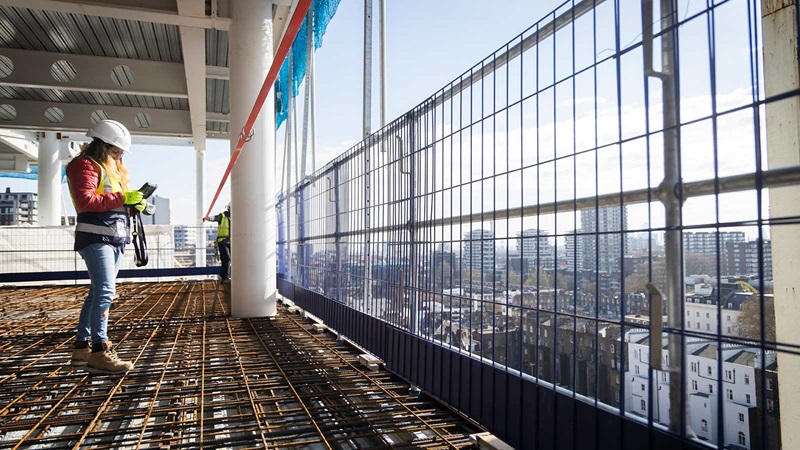Changing project delivery to meet net-zero targets
As construction increasingly adopts climate targets, owners and contractors can help change how projects are delivered. Doing so will likely require expert analytical and technical skills.
Meeting net zero targets in the years to come will require unprecedented capital reallocation. Some estimates say that achieving net zero would mean tripling overall decarbonisation investment from 2021 to 2025 compared with current investment levels. Successfully delivering this massive increase in capital projects will require new approaches to planning, developing, and constructing projects, including better use of analytics and modern tools. Further investing in people can also help organisations develop carbon strategies that prioritise innovative solutions and new opportunities, as well as improve recruitment and retention.
What strategic changes will the industry need to make to meet this anticipated increase in net zero targets?
There are three things that are fundamental to the industry achieving net zero. First, we must measure both embodied and life-cycle carbon at the outset of projects and minimise the impact throughout the design and delivery phases. Second, we should construct for the future, anticipating different economic and social needs in the decades to come so that we aren’t redeveloping every ten years. And third, we need to put a collective effort into the creation of green infrastructure that encompasses biodiverse solutions and combats the effects of climate change that are now sadly inevitable.
We also need to rapidly prioritise reuse and retrofits over new-construction projects. However, there is one thing that trumps all of the above—and that’s collaboration. There is simply no way the industry will achieve what it needs to if it doesn’t pull together. That means pooling knowledge and sharing best practices. It means peers in the contracting and property sector working together to drive change across the industry to collectively address Scope 1, 2, and 3 emissions. Climate change isn’t an opportunity to compete; it’s a crisis that needs a collective approach.
What new approaches will be required for how we plan, design, and construct projects to successfully scale up project delivery?
Early intervention is key. When we talk about carbon reduction at the construction stage, it’s already too late. It should be discussed at the planning and design stages. And the designs we produce today must deliver targets by 2030 at the earliest.
The emerging problem to date is that, as an industry, we’ve naturally tackled the low-hanging fruit—the things that are easier to fix or eradicate—and the challenges we’re left with are more complex. The only way we can overcome these challenges is by fundamentally overhauling how we design and construct projects. We can’t expect to make small tweaks if we want to make a big impact.
Modern methods of construction are the way forward, but they need to be fully adopted across the industry if we are going to tackle Scope 3 emissions. We need more off-site manufacturing and a far greater commitment to locally sourced materials and products. The question we should ask ourselves is, “What would we do differently if we were starting out today?” Would each past project have operated under a completely reengineered specification?
In 2022, I would like to see a significant change in the conversation—one that moves from carbon reduction to decarbonisation and regenerative solutions and considers the whole-life carbon impact. We need to restore the biodiversity equilibrium. Many of the materials we use are already carbon intensive. So we need to look more closely at low-carbon cement and recycled steel and aluminum alternatives, as well as at how to adapt production methods and use so they work for our targets rather than against them.
It’s essential to increase support for, and continue to invest in, research and development of new technology. However, the biggest opportunity for change sits with governments. Industry and governments need to work together to solve these urgent challenges. Planning laws need to change, and fiscal policies must reflect the direction we should head in. Reuse should no longer be penalised.
What do you foresee being the biggest challenges or obstacles to achieving our net zero aspirations?
A lack of will to change. Every leader and every team must be prepared to transform how they work—what they design, how they plan delivery, and what and where they build. Climate change should form the basis of every business decision, and we must take a collective stance against anything that cannot be rightly justified. Practically speaking, the industry needs to take a stand against construction solutions that aren’t accompanied by whole-life carbon assessments.
We need to reinvent how we think about infrastructure. The world is changing at a remarkable pace, and what people need now is different from what they will need in the not-so-distant future. How can we design social infrastructure in a way that means it still operates in a world that is 1.5 or 2 degrees warmer? Particularly in hotter climates, we must design for resilience rather than rely on current expectations of asset performance. The world is going to be hotter and wetter, and the climate is going to be less stable. Consequently, there will be a change in behaviours that projects will need to anticipate. We can’t keep rebuilding infrastructure and knocking down buildings every few decades. Instead, we must develop solutions that utilise our existing assets and increase efficiency, either through technology or by helping change behaviours.
Using data is fundamental, though we must be clear about the targets and what is achievable. We can’t reach our targets without knowing where we are. Data are implicit in making sure we’re moving in the right direction as well as reinforcing the added value to maintain momentum. The industry needs a standard and consistent form of carbon measurement, and reporting should be mandatory. It isn’t about calling out poor performance; it’s about sharing and creating a sustained knowledge base so that everyone benefits.
What organisational capabilities and skills are required to realise these goals?
Carbon reduction is highly complex, and solutions are evolving at a rate never seen before—the rate of industry change is evolving quicker than Moore’s law. Most organisations will need to enlist the help of experts, first to help them understand where they are, and then to set realistic targets and strategies.
Carbon touches every part of our business. Therefore, it must be central to every business strategy and sit at the top of every corporate agenda. Yet our recent annual industry carbon survey highlighted that just 35 percent of companies have a carbon strategy.
The biggest lesson we learned over the past few years was just how much untapped knowledge and motivation we had in-house—at every level. People are passionate about building a career with greater purpose, and once we realised the scale of the opportunity that we had, we set a clear platform and culture to encourage everyone to participate. This has resulted in innovative solutions and exciting opportunities, and it’s been a game changer for recruitment and retention.
The companies that succeed will have systems, processes, and a combination of talented people who have excellent analytical and technical skills. But success isn’t about companies. It’s about the industry as a whole, and that entails everyone working together.
*This article was first published on McKinsey.com.












